
7 things to do in Morocco
We absolutely love Morocco, it is a cheerful, chaotic, colourful and fragrant country, it is good for the soul and…
Colors, scents, flavors, welcoming faces: Morocco is love at first sight.
As frequent visitors of this magnificent country, we are often asked for recommendations and must-see spots.
That is why it’s time to put these recommendations together and down on paper. In the next few lines you will find the places in Morocco we have visited that are ideal for a sightseeing tour or a first trip to this red land.
There will be places near and south of Marrakech, while the north has not yet been explored by us!
But before we dive into these places, there are some terms that are intrinsic to Morocco and that you will encounter often, such as:
Souk = typical market
Riad = is a form of traditional architecture, for centuries it was Morocco’s traditional urban dwelling, now they are often hotels/bed&breakfasts
Oued = river
Jbel = mountain
Kasbah = fortified citadel located in the inner part of a city, built mostly of earth and thatch
Douar = village
Tizi = (mountain) pass
Erg = set of dunes
Dar = house
Bab = door
Tajine = typical dish named after the characteristic dish in which it’s cooked.
Msemen = a kind of crepes without yeast
Barghir = Moroccan pancake
Harira = soup
Ras el hanout = literally “head of the store,” mix of the most important and widely used spices in Moroccan cuisine
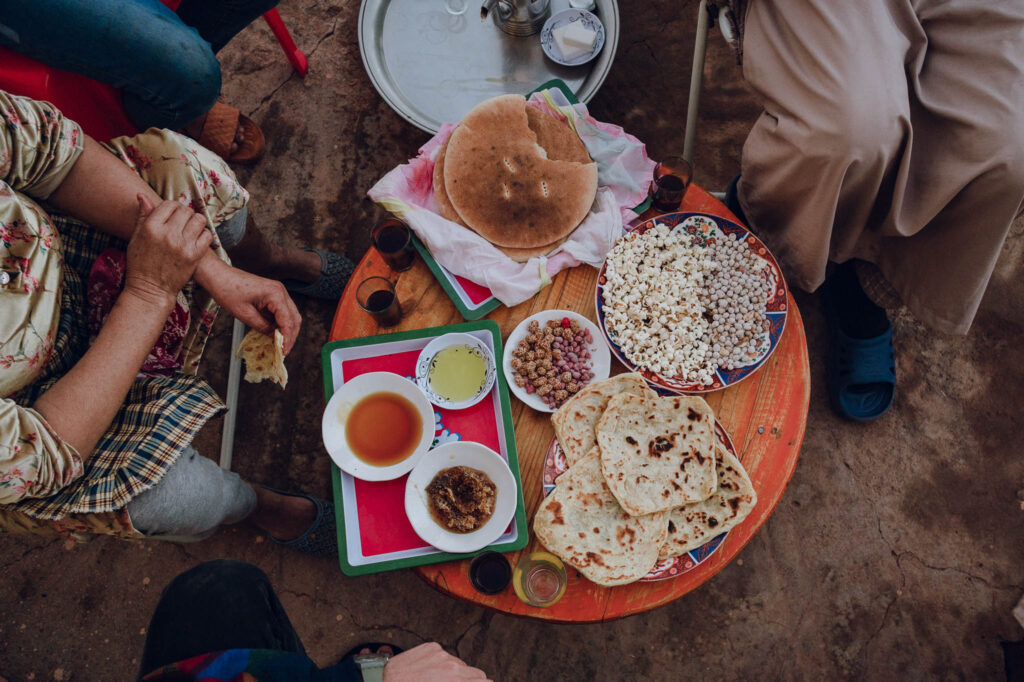
And now let the journey begin:
MARRAKECH
Marrakech, as touristy as it is at many times of the year, is not to be missed. Unique in its mix of the chaos of the souks and the tranquility of the terraces where you can eat and relax while admiring the scenery.
Don’t miss the harira in the evening banquets of Jemaa el Fna, a visit to “la Maison de la Photographie,” and a lunch stop at L’Mida.
AGAFAY DESERT
Compared to the desert in the south it’s only a taste, but for a quick first approach it’s definitely recommended. Just a few kilometers away from Marrakech, it offers several “Luxury Camp” looking at the High Atlas: driving back to Marrakech, we once spent a night at the Scarabeo Camp and it was a good experience, also enriched by the fact that the food was amazing.
Remember that the temperature drops in the evening and it’s cold at night, especially in the desert!
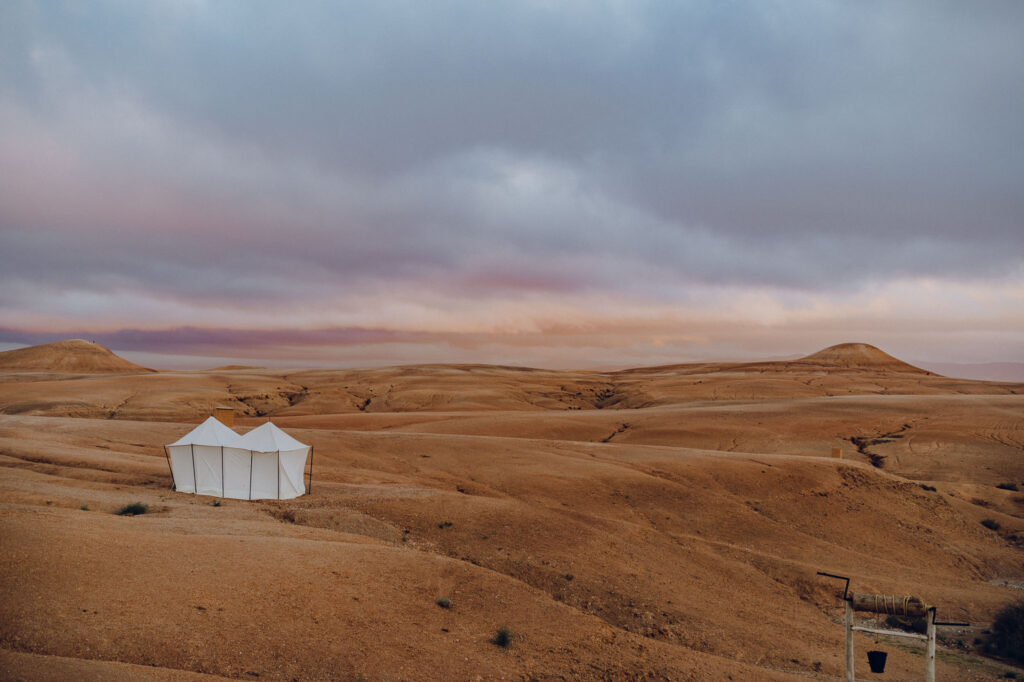
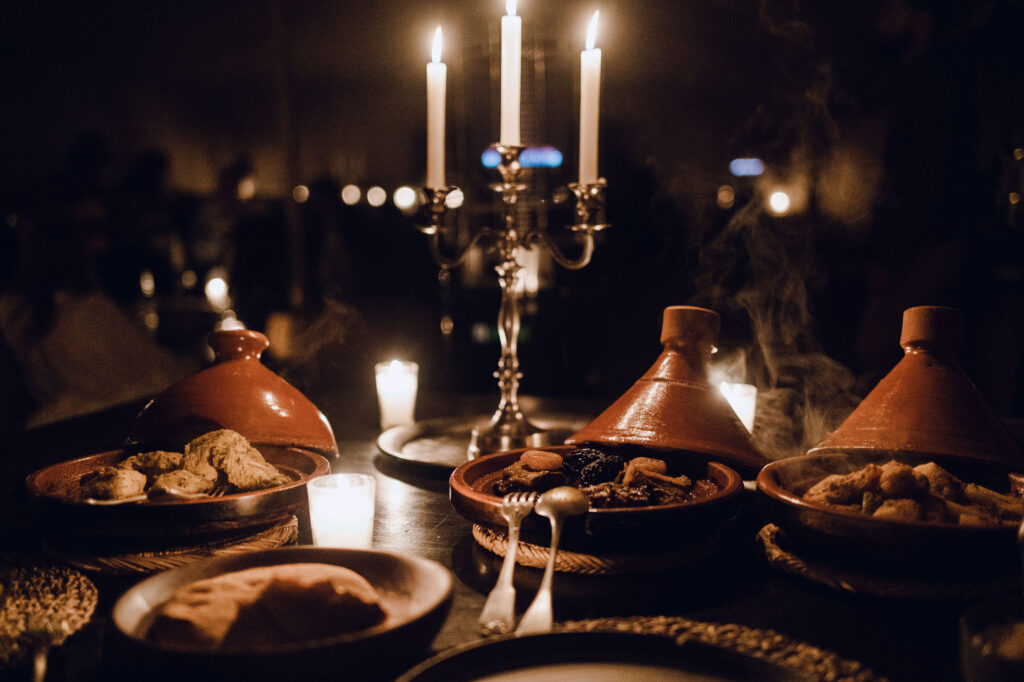
TAROUDANT
Taroudant, called “the little Marrakech,” is the capital of the province of the same name in southwest Morocco. It’s pretty, not very touristy and with a large and well-stocked souk where you will be able to find somewhat cheaper prices than in the more famous imperial city. For example, inside the Berber souk, south of Talmoklate Square, you will find a large door leading to an inner courtyard filled with bowls, tajines, plates, trays, baskets and many more, perhaps not as aesthetically “perfect” as those in Marrakech, but with some cleaning they are worthy just as much. With a 20€ outlay you could take home a nice haul.
TIOUTE OASIS
Near Taroudant, for a half- or full-day trip, you can visit the Tioute Oasis, which consists mainly of a large palm grove but also of fruit, barley and wheat crops that belong to the locals. We recommend that you rely on a local guide to better appreciate the place, but even if you are not looking for one, someone will surely come and act as your Cicerone, asking for a fair fee in return.
In the palmerie, don’t forget to announce yourself at least an hour before lunch at the restaurant, maybe even before you finish the tour, so you don’t have to wait 2 hours hungry!
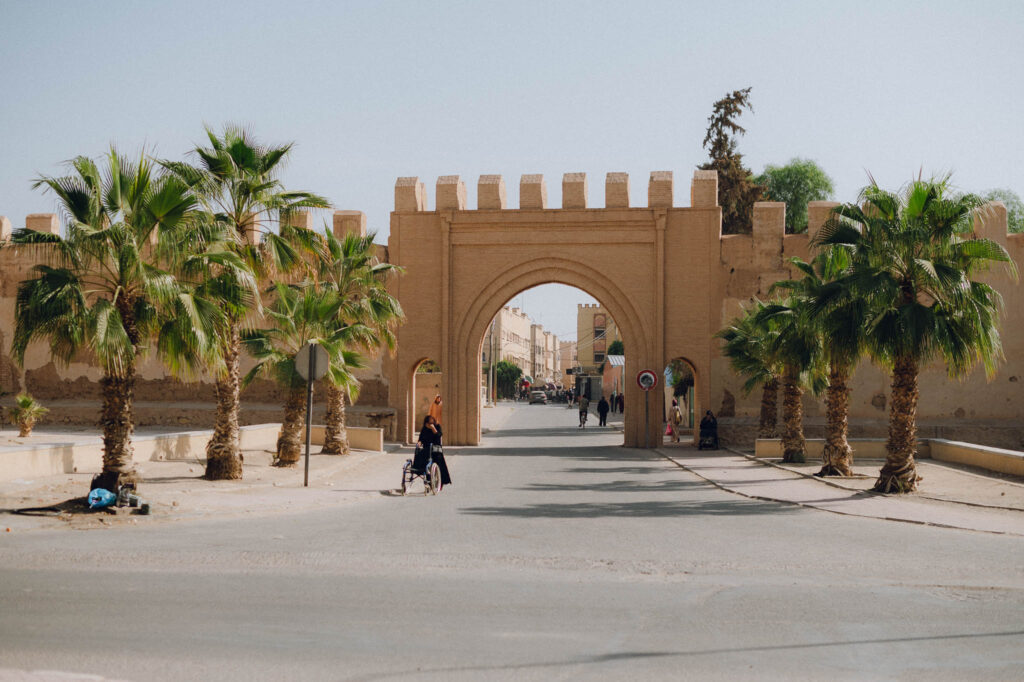
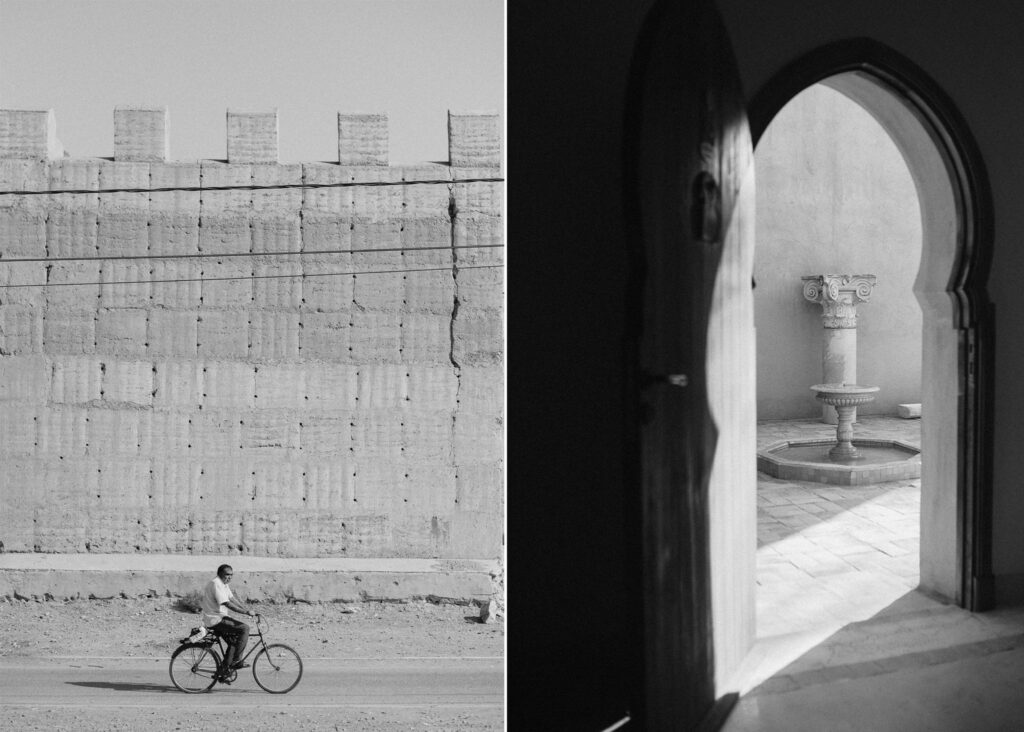
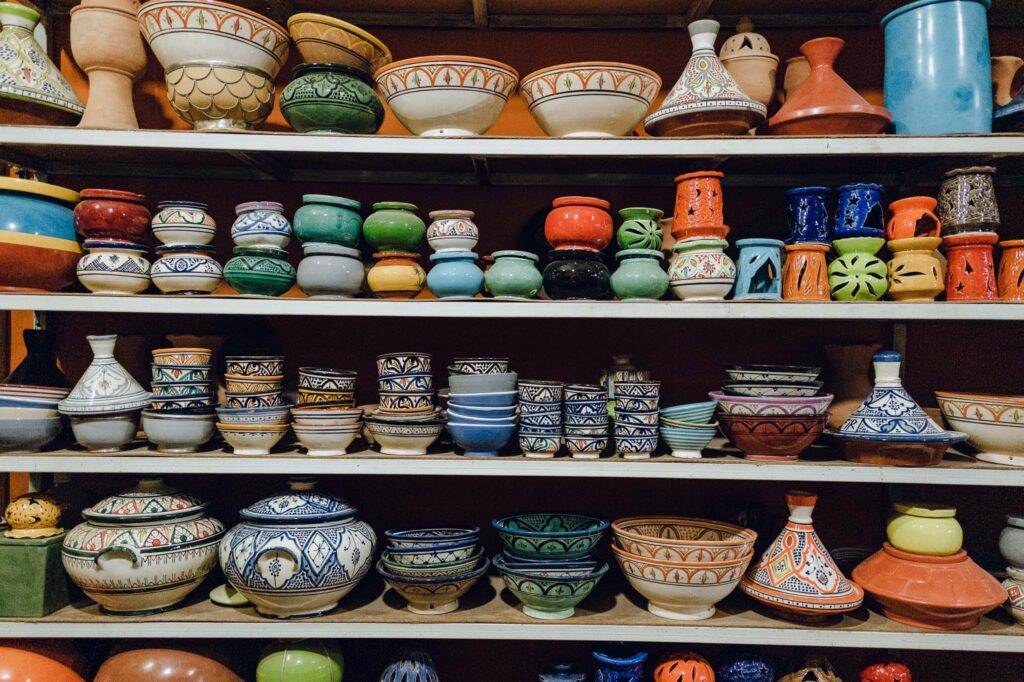
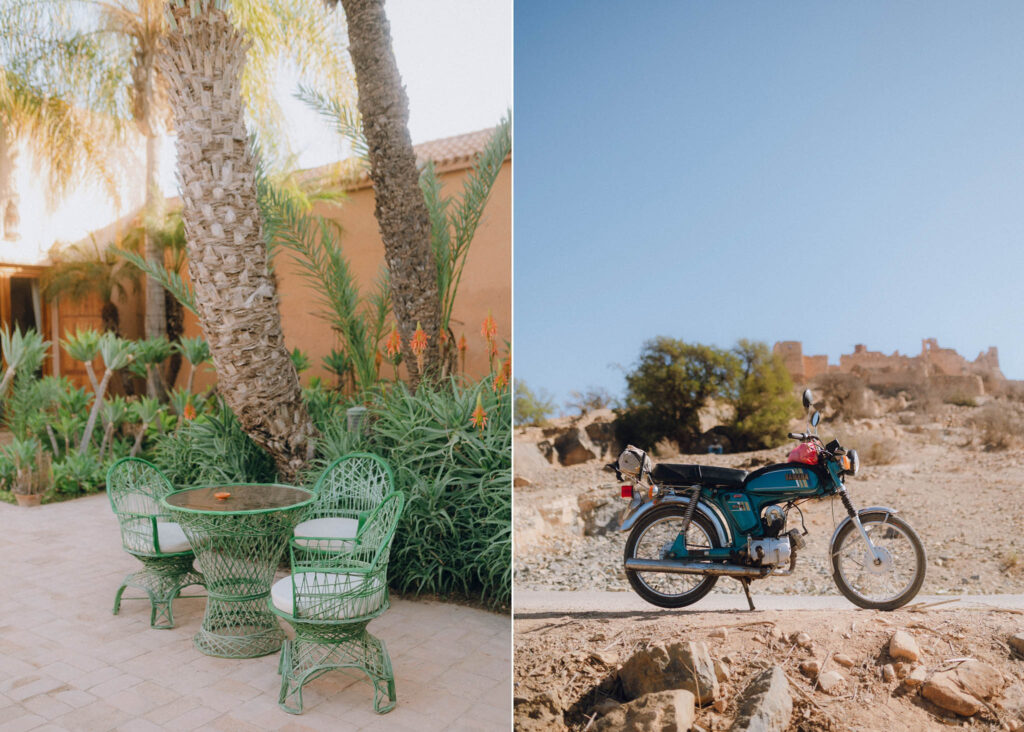
TAFRAOUTE
It’s a small town in the south of Morocco, in the Anti Atlas. It’s one of those places that is especially worthwhile for the journey you have to take to get there. Any road you take, indeed, will leave you speechless. It feels like you’re on the moon, or in “non-places,” far away from everything. It’s always good to take water with you in case of an emergency or if someone stops you on the street to ask for it.
3km from the town, you will find the village of Aguerd-Oudad, a semi-deserted hamlet of pink houses in the shadow of “Napoleon’s Hat” a rock formation smoothed by time that has precisely this shape.
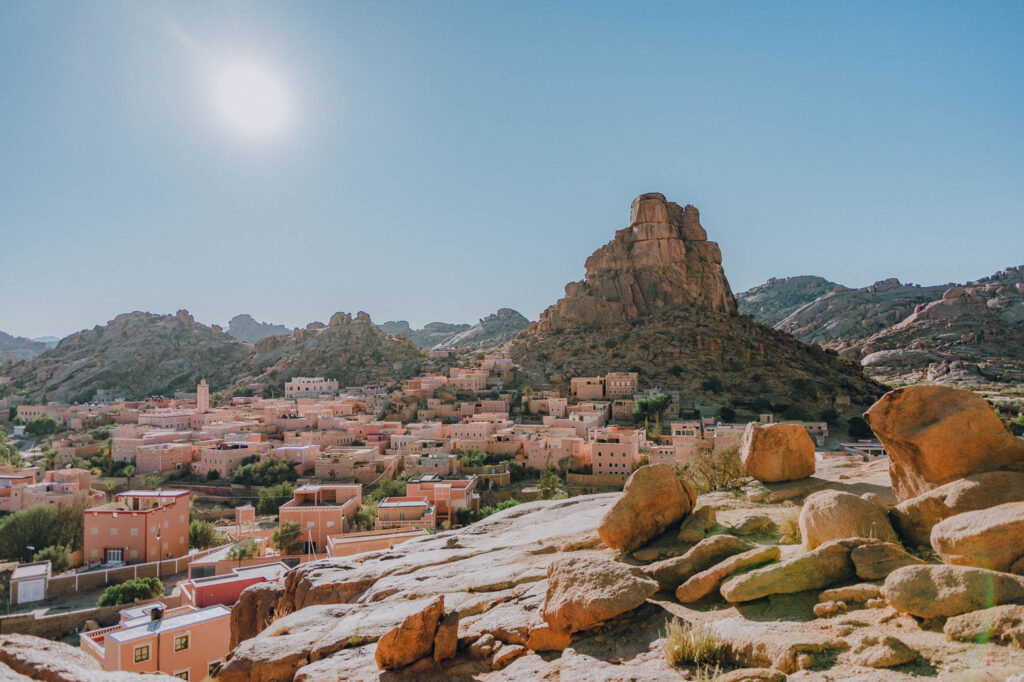
TALIOUINE
In Taroudant province, this city is famous for saffron production as it’s one of the world’s leading exporters of this spice. Saffron flowering is in November.
OUARZAZATE
If you go to the bus station in Marrakech or to take a taxi, the chant you will hear is “ouarzazate, ouarzazate,” repeated so many times and in a row, that even if you don’t want to go to Ourzazate, you will end up considering it a must-visit destination! But it’s really worth it, because it’s a relatively modern, very neat and pleasant town, famous for bringing many international films to life thanks to the Atlas Film Corporation Studios. Great stop, even for the night, if you are traveling to or returning from the desert.
ZAGORA
Located in the Draa Valley, Zagora is the capital of the province of the same name. The Draa Valley is a fertile area in a totally arid region, characterized by lush palm trees, pink/red earth around and a large river along which all village activities take place. The Draa, in fact, is the longest river in Morocco, becoming an essential stop for travellers crossing the desert.
This valley is also famous for the green pottery that is sold throughout the country.
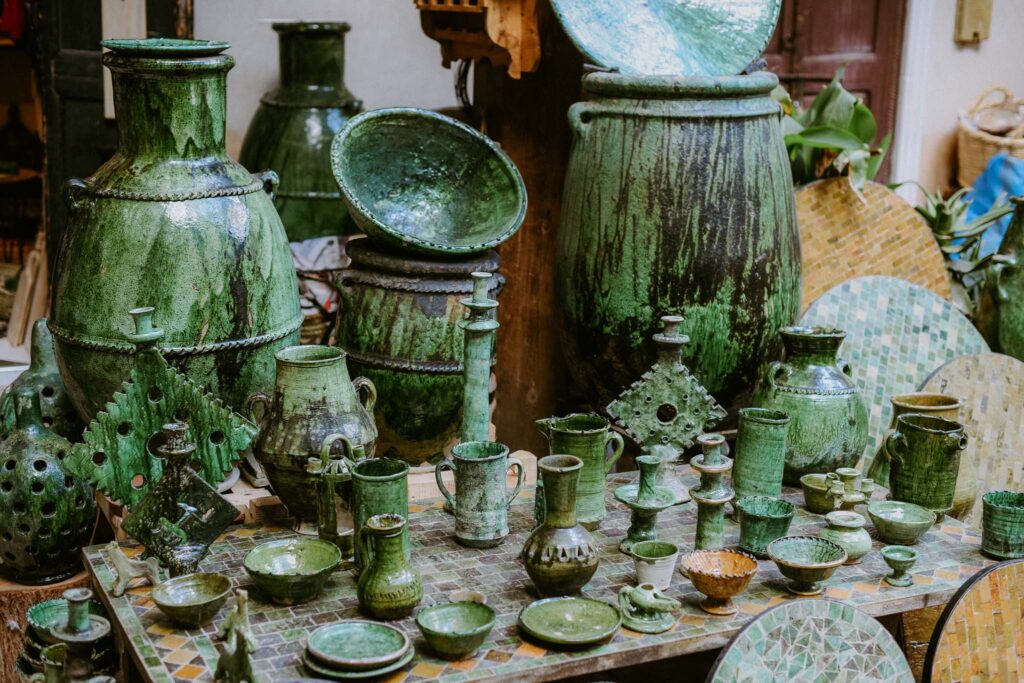
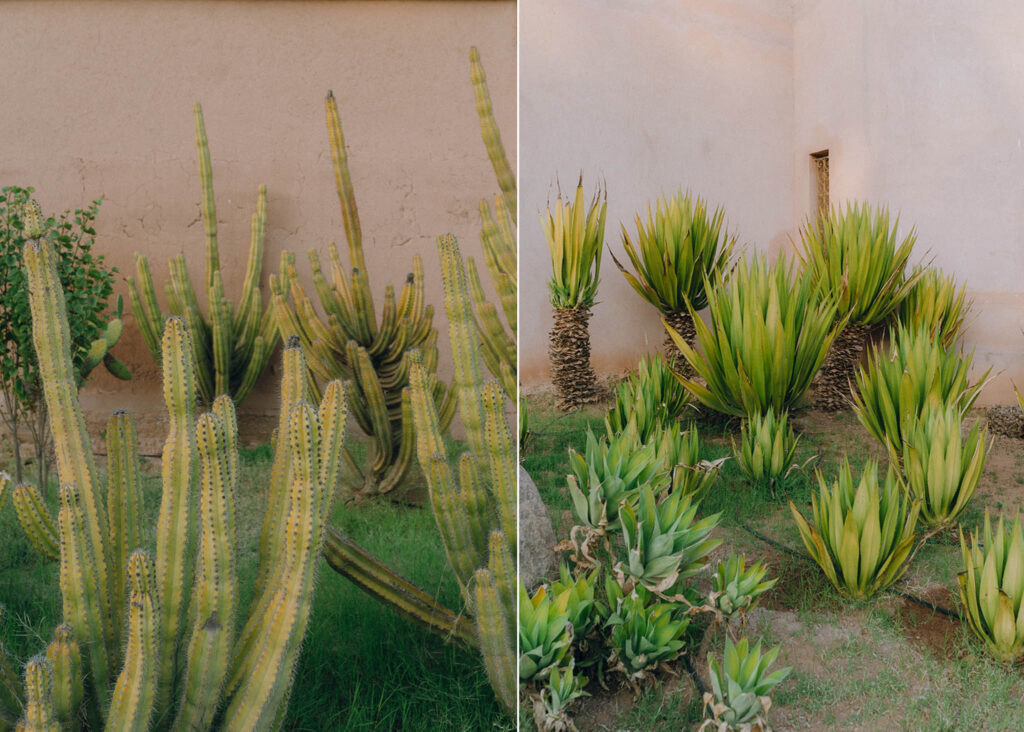
MHAMID EL GHIZLANE
In the south of Zagora, Mhamid el Ghizlane is the gateway to the desert. Indeed, several camel tours to the highest dunes (Erg Chigaga) depart from there, with the chance of sleeping in tents and seeing many, many stars.
If you then happen (or force your partner) to go to Mhamid during the Festival des Nomades, you will have the opportunity to enjoy beautiful concerts and see the blue nomads of the Sahara.
VALLEY DU DADES
Also called the “Valley of the 1000 Kasbahs” , the Valle du Dades stretches from Skoura to Boulmalne du Dadès. The canyon, crossed by the Dades River, is enriched by oases, palm groves and the splendid Arab fortresses called kasbahs and is surrounded by the High Atlas Mountains.
Along the way you will find Kalaat M’Gouna, a fortress at an 1467m altitude, the starting point for many hikes to Mount M’Goun. Famous for being the village of roses, it hosts thousands of tourists every year, especially in May during the Rose Festival.
Don’t miss the Gorges du Dadès and the Gorges du Todra, with vertiginous roads and breathtaking scenery.
MERZOUGA – ERG CHEBBI
Tourist resort located in a desert oasis, very close to the border with Algeria.
We spent a night there the first time we went to Morocco, but if I had to choose between Merzouga and Mhamid, I would choose the last one because of the atmosphere and the higher dunes.
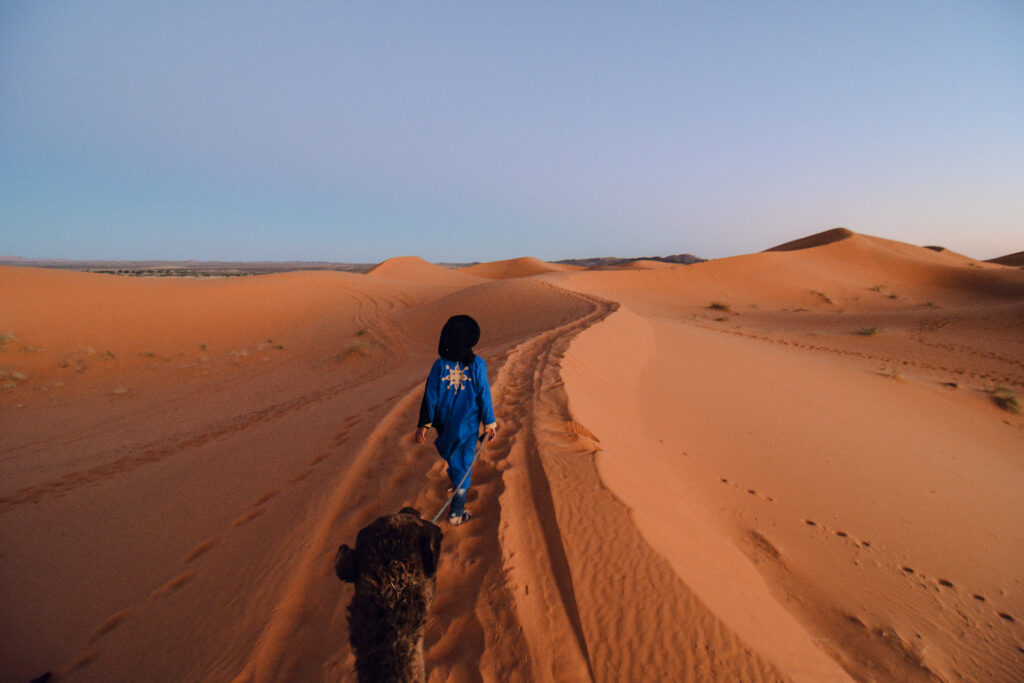
HIGH ATLAS
The earthquake of September 2023 put a huge strain on the Berber population of the High Atlas, some villages were wiped out, and roads that used to lead to these villages now no longer exist. Which is actually an extra reason to travel to these areas and help the local people restart and rebuild their villages. Of course you will need to get some more info first and why not, rely on local guides in Asni or Imlil (starting points for the most popular treks), but we can assure you that it’s worth it.
The Berber villages of the High Atlas are sealed in our hearts, as are all the people who always welcomed us into their homes, to eat from their own plate and share a piece of life together.
Like Altripiani, we traveled through some of the valleys of the High Atlas, backpacking and with the help of google earth. Hand-printed maps where only the satellite could tell us whether there were inhabited villages or miles and miles of nothing. But just as a matter of responsibility and, let’s face it, to preserve the authenticity of some non-touristy places, we never provided specific geolocations. Nevertheless, we think that with the right spirit and time, one can have our same experiences because Morocco is a such a welcoming country.
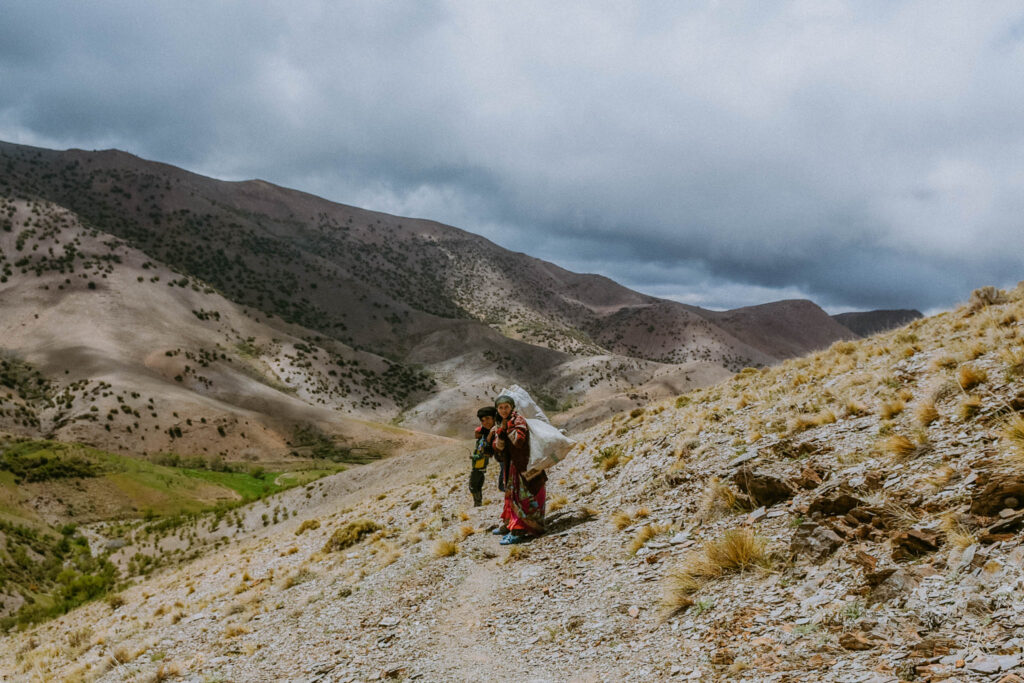
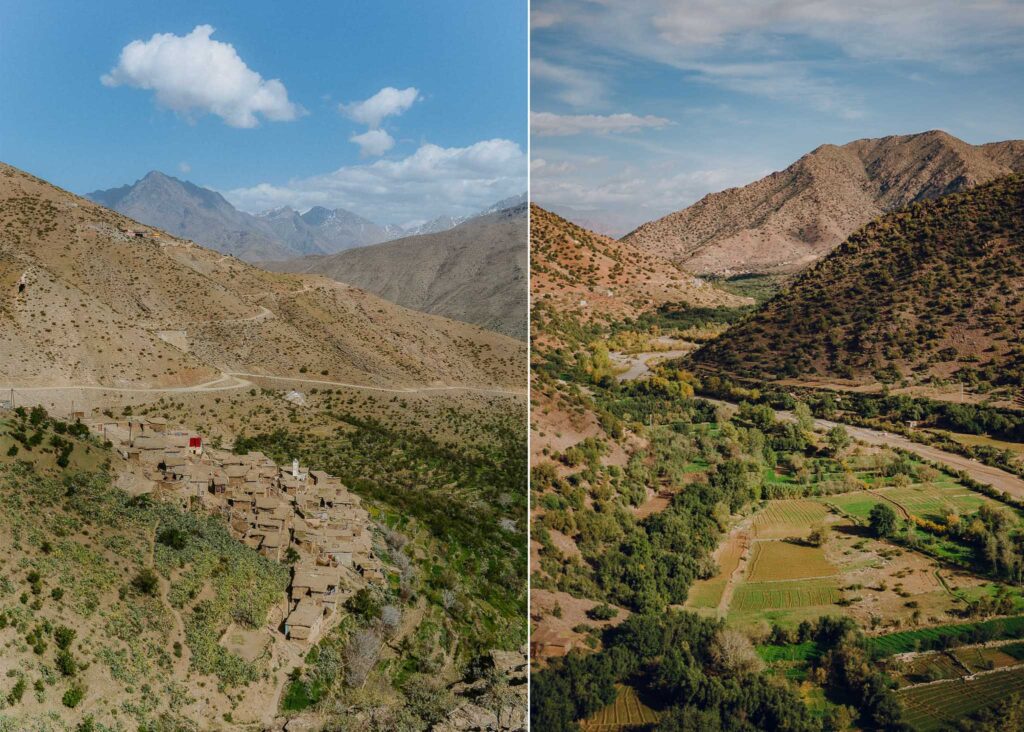
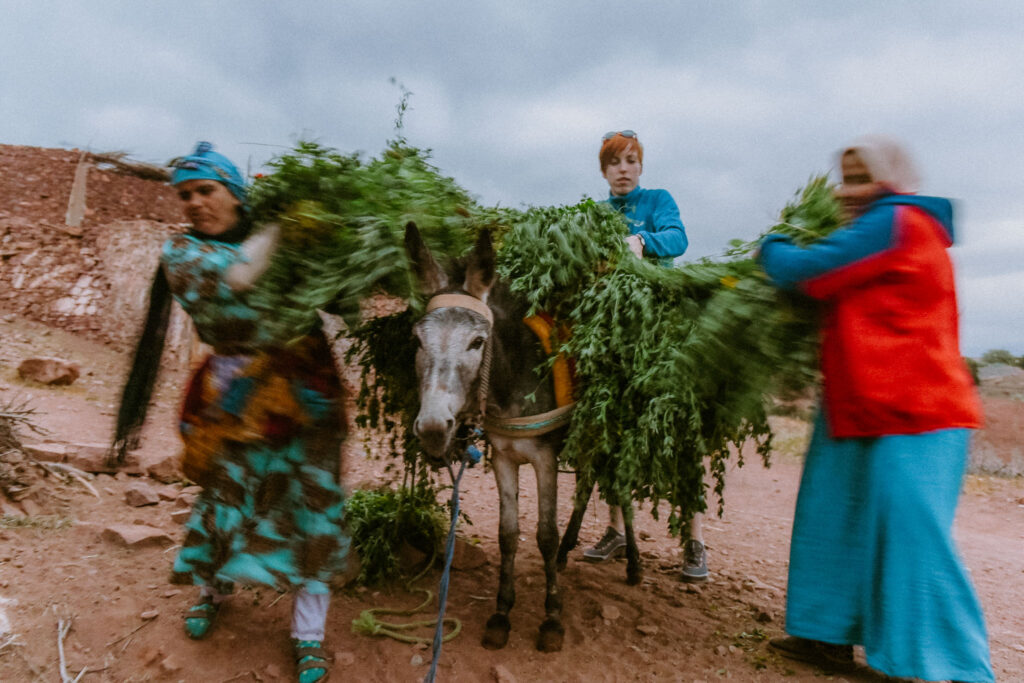
THE BERBERS
What a wonderful people the Berbers are! You will meet many of them in these areas, especially in the villages of the High Atlas; you will recognize them because they are free.
“Berber” is an almost derogatory term given by the French settlers and comes from the Greco-Roman word “barbarian”; instead, it’s more appropriate to call them Imazighen (pl; singular Amazigh), which in Berber means Free People. And they are, partly because they have resisted all the kingdoms that have ruled them, from Carthage to France.
The Tamazight language stretches from the Libyan desert to the Senegal desert and is handed down mainly orally. Only for the past few years has it been written down and taught in Moroccan schools, while the official language of Morocco is Arabic and French as a second language.
If you make an effort during your trip to go beyond French and learn a few words of Arabic, you will be a conscious tourist. But if you try to use some Berber words, then you will be a real traveler and you’ll go straight to the heart of your interlocutor.
So here are a few words in the Tamazight language, we have chosen only the most pronounceable ones:
What’s up?/Is everything all right?: La bes?/La bes bikhair? (literally “There’s no bad”)
Fine, thanks God: La bes, alhamdulillah
Bye bye: Slema!
Thank you: Tanmirt!
Water: Emen
Bread: Aghroum
Oil: Zit
Olive: Zeitoun
Olive Oil: Zit Zeitoun
No problem: Mashi moushkil
Local shop: Tahanut
Donkey: Lahmar
Chicken: Afullus
Wait!: Bleti!
Berber saying, “don’t buy fish from the sea.”
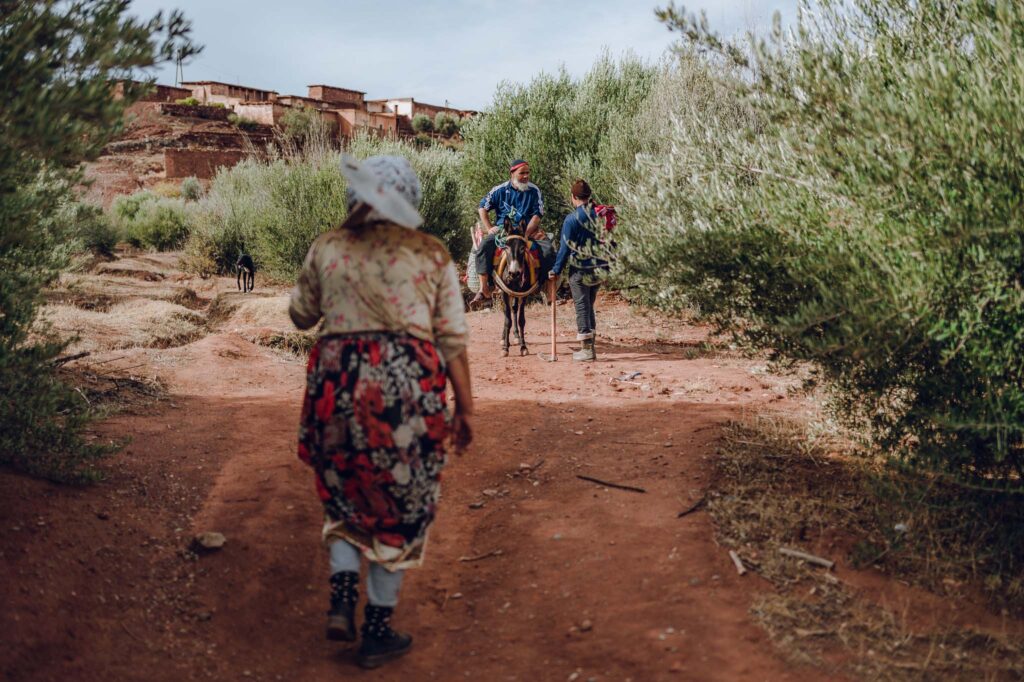
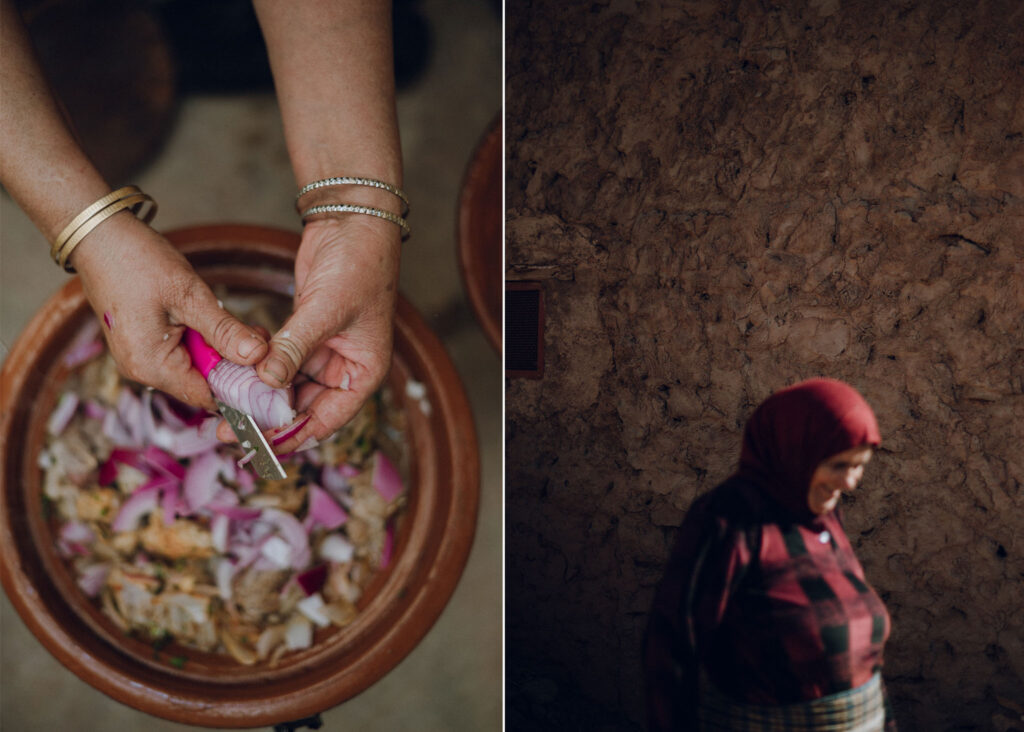
RECOMMENDED ITINERARIES:
PRACTICAL INFO
TAXI: From Marrakech airport to the medina the average price is 50dirham (about €5) per person. For smaller routes it’s around 15-20dh.
BUSES: official companies are CTM, ONCF and SUPRATOUR
TRAIN: ONCF.MA
CAR RENTAL MARRAKECH: get in touch with us to have the contact
RIADS AND RESTAURANTS MARRAKECH: get in touch with us to have some reccomendation
TIPS: if you want to buy a tajine for cooking (not decorative), their cost is not 10€ as listed in the souks of Marrakech, but maximum 3€ (the largest one).
7 things to do in Morocco
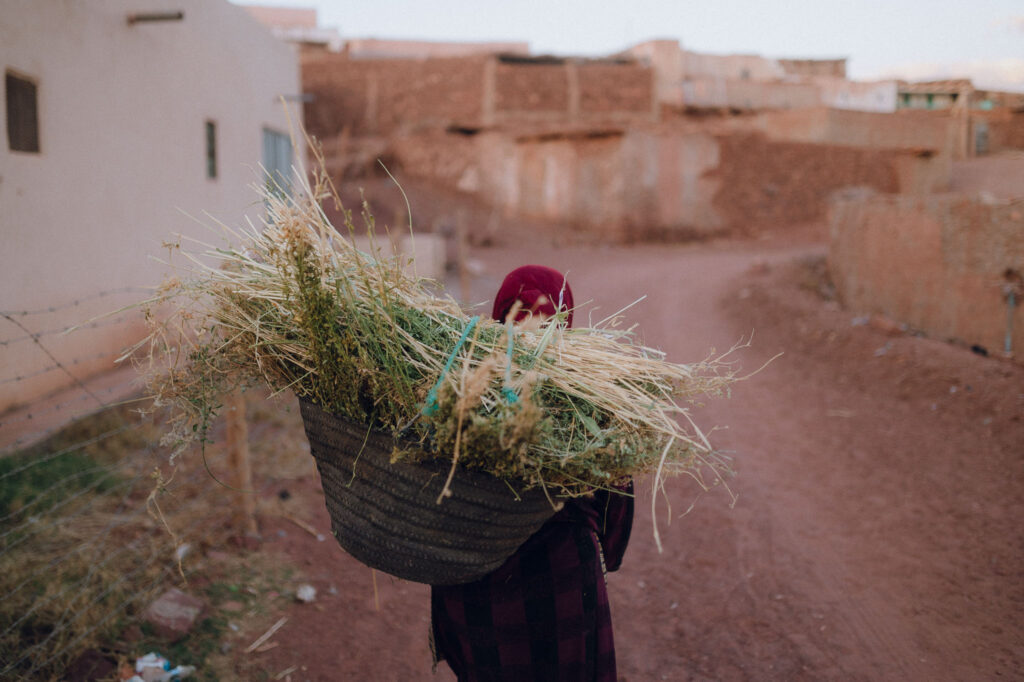
“The whole universe is located around the teapot. More precisely, the Sinia (circular tray) represents the Earth, the teapot represents the sky, the glasses represent the rain; the sky, through the rain, joins the Earth.” – Abdallah Zrika
We absolutely love Morocco, it is a cheerful, chaotic, colourful and fragrant country, it is good for the soul and…
It’s hot and dusty and this morning our legs are more tired than usual. We are on a dirty road…
Hiking through the second line of the Altripiani project in Morocco, we have been lucky enough to meet a lot…
We had just found the right place to pitch the tent, a decision that sometimes can seem trivial, but actually…
Flying to Marrakesh has now become easy and quite cheap. You just have to book a flight and you may…
Should we compare a peak to a dune and a dune to a peak? That is the question I’m asking…




